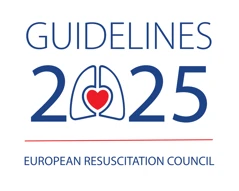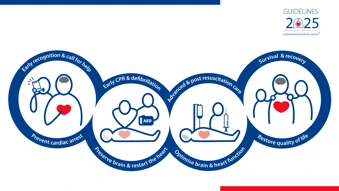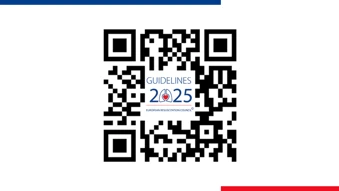Guidelines 2025
The ERC was founded as a multidisciplinary and multiprofessional scientific society in 1988 with the aim “to save human life by improving standards of resuscitation in Europe, and by coordinating the activities of European organisations with a legitimate interest in cardiopulmonary resuscitation”. To achieve this, up-to-date evidence-based European resuscitation guidelines for the prevention and treatment of cardiac arrest and life-threatening emergencies have been published since 1992, with updates every five years since 2000.
These guidelines on resuscitation are based on extensive and systematic evaluation of research that results in systematic or scoping reviews, which are published yearly by the International Liaison Committee on Resuscitation (ILCOR) as the Consensus on CPR Science with Treatment Recommendations (CoSTR). These high-quality, evidence-informed guidelines are used to organise resuscitation in healthcare systems, to guide healthcare professionals in their daily clinical practice, and to build the basis for the ERC’s teaching and training program reflected in its different course formats.
The development of ERC guidelines is guided by a steering committee led by the ERC Director of Guidelines. Writing groups with diverse representation translate the scientific evidence into guideline recommendations and cover the following topics: epidemiology, systems, adult basic and advanced life support, neonatal and paediatric life support, post-resuscitation care, special circumstances, education, ethics, and first aid.
Condensed concise guidelines for clinical practice are presented first, because most of the ERC guidelines will be used in emergencies where efficient and timely action is critical. These concise guidelines for clinical practice provide clear, succinct recommendations with easily understood algorithms to provide the reader – mostly healthcare clinical professionals but also trained or not trained lay persons – with unambiguous, step-by-step instructions.
Information about the background of the recommendation, or the certainty of evidence can be found in the evidence informing the guidelines. Most ERC recommendations are based on the ILCOR CoSTRs and the certainty of evidence is determined by the ILCOR task forces. Often in resuscitation science no evidence or insufficient evidence to formulate an evidence-informed recommendation is available. However, treatment options are needed for clinical practice, and in such cases the expert opinion of the writing group resulted in a consensus on current approaches to treatment based on best clinical experience and practice.
These guidelines were reviewed by the national resuscitation councils and the general public in an open process. All updated algorithms, information leaflets and pocket cards, the newest edition of the ERC guidelines on resuscitation 2025, as well as a new compressed information brochure about the ERC resuscitation guidelines for lay people can be downloaded freely from the ERC Guidelines download centre at this ERC webpage.



